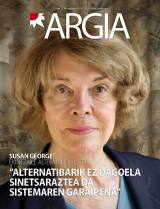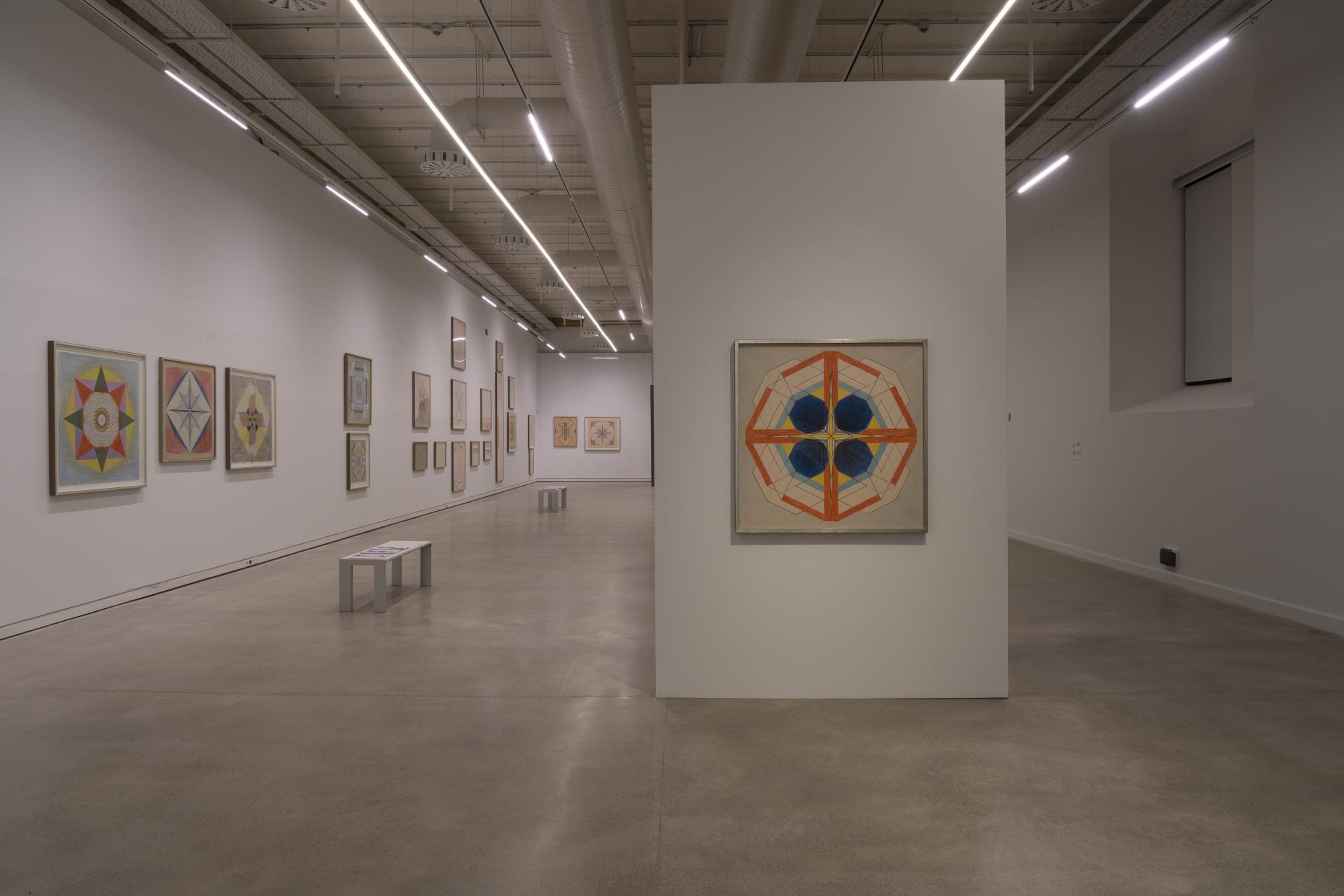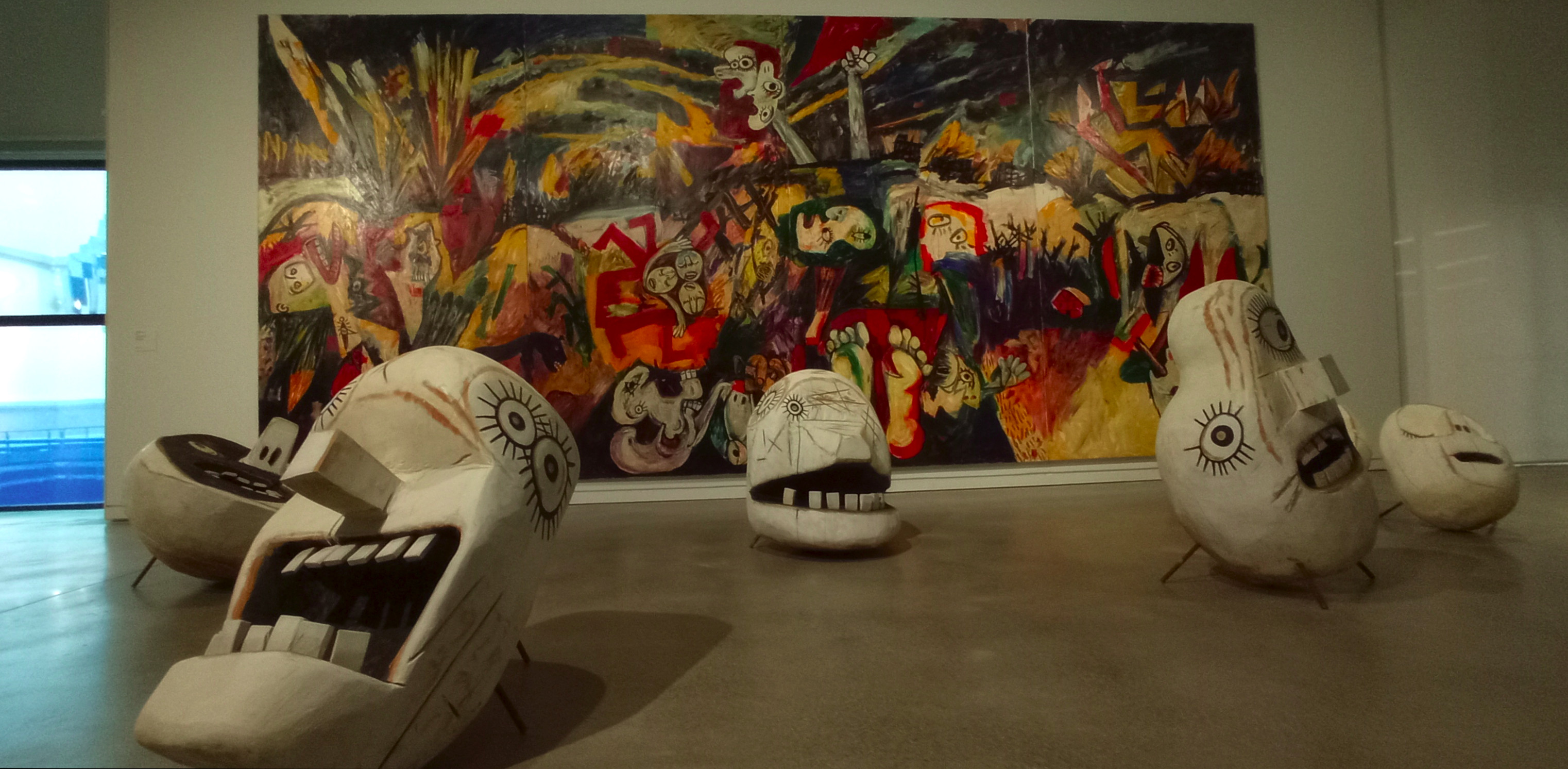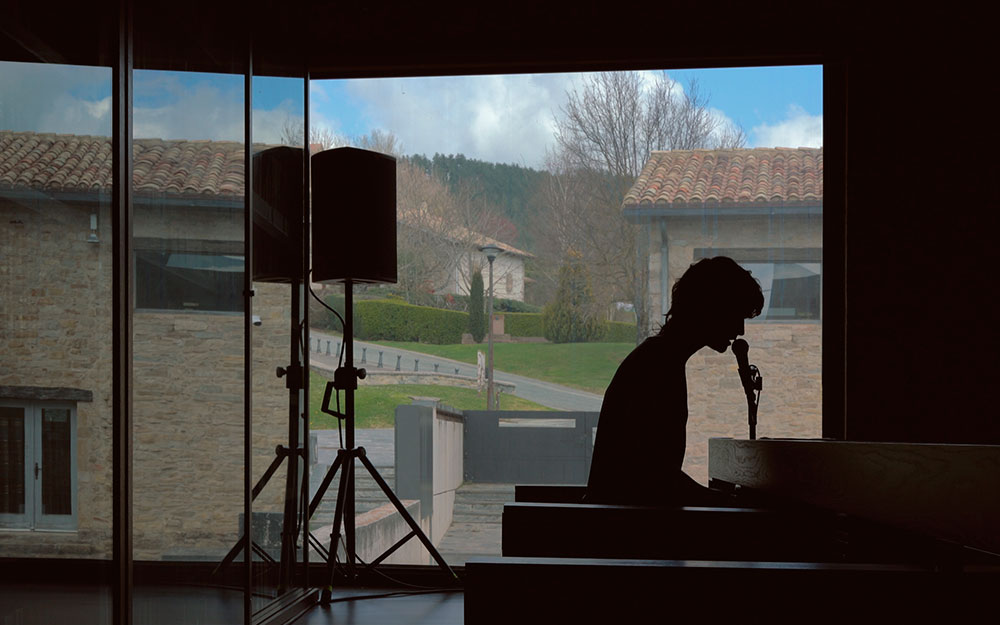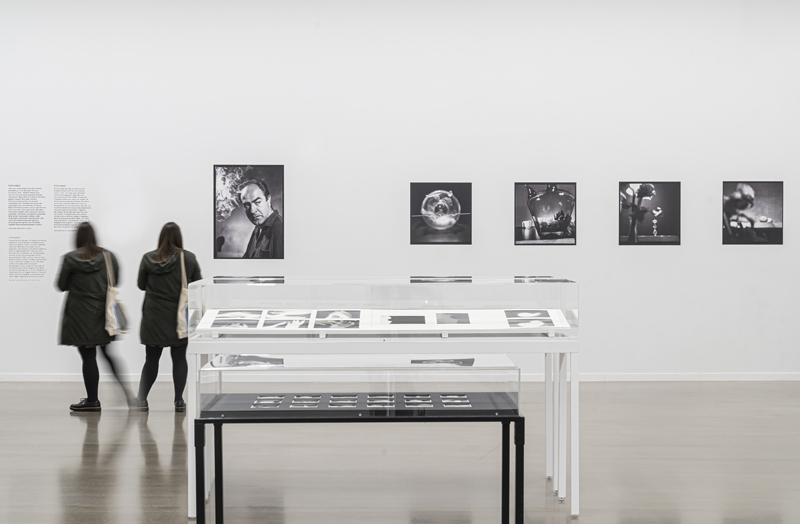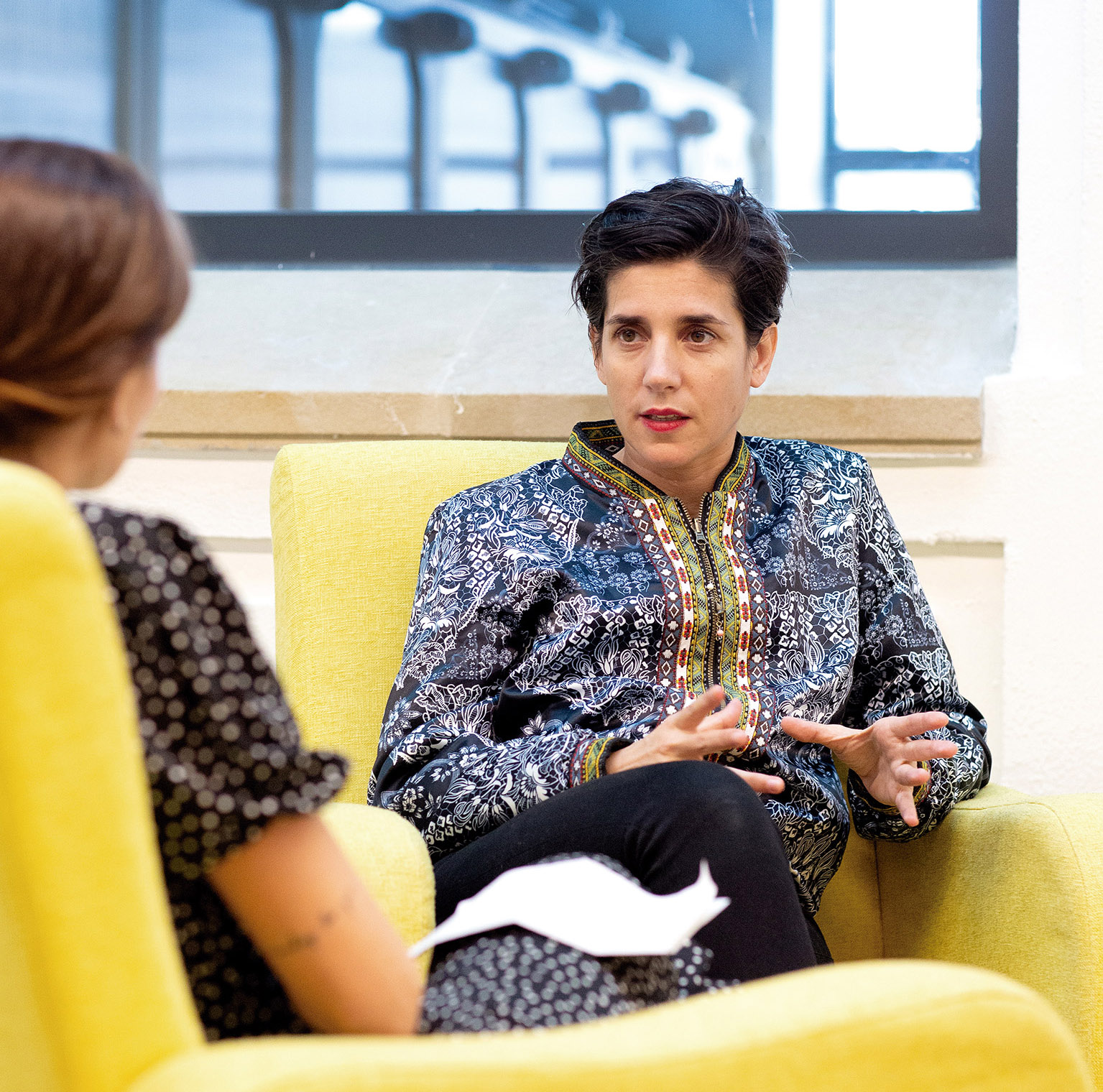"We didn't come to make expositions that are already made."
- Ane Rodríguez took on the helm of the Tabakalera cultural project three years ago. The socialization of the project has come from his hand this September. Flashes and lots of conversations, but after the first noise, what? These are the intricacies of the city's largest cultural center.

“Things go fast, it doesn’t give us time to reflect our thoughts on communication and media,” says Ane Rodríguez, director of Tabakalera’s cultural project, in response to the first question, how the balance has been made so far. We're in a 3rd floor office of the building. Upon entering, we've seen the team members on their computers, a newly premiered space with a loft look, one of those days of small summer, a quiet atmosphere, pouring light out from the window that gives to the main entrance. It has been a month and a half since its inauguration, after a massive beginning, the space of contemporary culture is taking shape, but there are still some elements that should later have relevance in the building. They had said: the opening has not ended with the main quote from September, they want to brand the restored tobacco factory throughout the fall.
Here are meters of height for some openings. I wondered if it wouldn't be too big. Asked if he is concerned that in Donostia-San Sebastian, even in Gipuzkoa there are not enough critical masses created to fill with such content, he says no, because it is a “shared responsibility”. That is, not everything is in the hands of Rodríguez and his team, it is approximately a quarter of the building the cultural project.
We take the point: what Tabakalera is – a building – and what Tabakalera is – a cultural project – must be clearly differentiated. One is space, the other is dynamics; one is the showcase, another part of what you can find inside, which will be completed with what will be done by Filmoteca Vasca, Zineuskadi, Zinemaldia, Kutxa and Instituto Etxepare, as well as other initiatives. In any case, Rodríguez considers that they are not yet sufficiently differentiated: “The burden is to have the same name as the building, because the cultural project is judged in the rest.” You've seen nothing new, when you've rented a space for a fashion show in Tabakalera: “We don’t organize it, but if people come to Tabakalera they inevitably bond with us. We have to try those things, whether they work or not; see how to do things with the ingredients we have, see if you need a little more salt or if we've gone with the oil."
Exhibitions no one else will make
The potential is not small with this space at hand. As a strong point, Rodríguez referred to the "relationship between the public", in reference to Vitoria-Gasteiz. Those who enter the building have the circuits they can make: “Someone who comes to the kutxa classrooms can then go through the library and see what programming there is in the cinema; or vice versa, let an outside commissioner visit our exhibition know something about here.” One of the goals is for people who go for very different purposes to spread each other.
It’s easy to say, but in a village where a large part of the audience listens to the word “art” and tends to take their hands to their ears for fear of what may come next, many fences will have to be thrown. “I think we have many complexes. And I put myself in the bag. We have to know how to see things more calmly,” says Rodríguez. He has been in favour of saying “I like” or “I don’t like” before a contemporary exhibition, for example. He thinks that is better than saying “I don’t understand it” and stay well.
The first option to implement the recommendation, the first Tabakalera exhibition. We ask the director if we need to understand audiovisual arrabales as a declaration of intent, since it is not, to put it another way, a very “commercial” exhibition – and it would be pardonable to do something more mainstream when it is opened – analyzes, among other things, the conditions of production, reproduction and transmission of audiovisual art, requiring the visitor to make an effort from the outset. “This comes from another work, Apology/Antology, in which we have worked for two years. We found it quite logical to make an exhibition at home and not something to order.” Koldo Mitxelena, room Kutxa Kubo and San Telmo are also there, so Tabakalera has to find his model through newly created exhibitions; or those that drive creation; or something they will present as a result of an investigation: “We don’t come to make expositions that are already made.”
But, coming back to Audiovisual Media, he acknowledged: “Yes, it requires attention. And we as an organization have to make the tools available for mediation. It is not our desire, let alone, to hold closed exhibitions. But we want to make a speech as we make exhibitions. We will learn to improve communication from one exposure to another; we have to do an exercise in which texts also cut the conversation dezaten.Bestela and do not get anywhere.”
New Rulers: Change plan?
In the campaign of the last municipal and foreign elections, Tabakalera had a reputation for 15 minutes when the list head of the PNV by Gipuzkoa, Markel Olano, talked about turning the building of Egia into “a space of pointer audiovisual creation”, something that does not coincide with the current project: at the moment it focuses on multidisciplinary contemporary artistic practices, not only audiovisual, but also solely production. As you know, Olano won the elections and the other two public institutions that make up the board of directors of the building – the City Hall of Donostia-San Sebastián and the Basque Government – are also in the hands of the PNV.
Start changing nothing else starting? Mr Rodríguez has presented his opinion on the subject in two parts and has recalled the objectives that the centre has at present. One: “If it is decided to amend or negotiate, it will be negotiated. I understand that each ruler has set objectives; and that being the case, one must enter into a negotiation”. Two: “But Tabakalera has taken fourteen years to open it. It takes time for the project to be implemented. If before we started to change the elements, it would be a step backwards.” Asked about attempts to make such changes, Rodríguez says no: “More than attempts, there are goals set from one legislature to another.”
The project was led by Rodríguez in 2012, with a very different institutional panorama – the Provincial Council of Gipuzkoa and the City Council of San Sebastian, in the hands of Bildu; the Basque Government had the government of the PSE-EE. After a four-year game of chairs, the director and the institutions sat down to talk about the good relationship he has with the new presidents, from a “summer to go crazy” with the inauguration. The word he has used to define the relationship is “Convergence”. It is convenient to keep an interview, since the projection this cultural space can have is a candy for any authority. “That’s right. And it's not just here. No such projects have been opened in the Spanish State either.”
Not enough to enter in 2016
This interview is being recorded a few weeks before San Sebastian can wear the band of the European Capital of Culture. The appointment will create the need to coordinate the public cultural programming of the city and the office of 2016 assumes this task of giving a global vision. Of course, Rodríguez has confined himself to explaining the work he is doing with other institutions, including Tabakalera. As he explained, there is no agency to redirect interinstitutional relations: “I think one of those legacies that should leave 2016 should be that, a methodology to sort things together a little bit.” As the event will pass, but many projects have been launched with the intention of lasting.
Thus, 2016 will be a year of change. And as when everything starts to change, resistance emerges. One example, that of the transfer of the Nosferatu film cycle from the Main Theatre to Tabakalera: there has been some rumour that in one session some viewers were left without space, something of little importance, but that allows asking whether a space such as that of Egia can overcentralize the offer of San Sebastian. “Opening a project of this kind means rethinking things in the city,” said Rodríguez, “but we wouldn’t want to evict other spaces.”
Many pieces are moving in the cultural offer of Donostia and Tabakalera will have to mark their way in that dance, not forgetting the international character of the center and trying to attract citizenship. Surely the ideas will come clearer with a silence such as that of this October, far from the noise of the first weeks, and in the vicinity of the spectacle that is expected next year.
Emma Kunz's universe is the work of 18 authors. Exhibitions in dialogue with contemporary art. The large images made with pendulum by the Swiss researcher and curator Emma Kunz (1892-1963) complete the rest of the exhibition contemporary artists in dialogue with the work of... [+]
Beñat Achiary went to Barcelona with the Artze brothers to offer them a show, the txalaparta and the vocal improvisation were avant-garde, and not just a requirement for the acts. The slow car, the long road, the half-fitted chair, the sun on the forehead, and so he asked... [+]
Badira erakusketa madarikatuak. Horietako bat izan zitekeen Nestor Basterretxeari Donostiako Tabakaleran dagoen Kutxa Kultur Artegunea aretoan eskaintzen zaiona, inauguratu eta handik astebetera itxi behar izan baitzituen ateak. Ekainaren hasieratik urrira bitartean baina,... [+]









